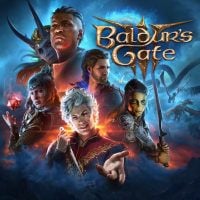
August 3, 2023
RPG, Dungeons & Dragons, Fantasy, Internet, Classic RPG, Co-op, Multiplayer, For 2 Players, Splitscreen, Romances, Singleplayer, Turn-based, Isometric View.
The third installment in the series of iconic RPGs, developed by Larian Studios. Baldur's Gate 3 is set about a century after the events of Baldur's Gate 2: Throne of Bhaal. One of the most significant changes of this title is a turn-based combat. The creators have also modified the dialogue and the leveling-up systems.
Gamepressure
OpenCritic
Steam
Users
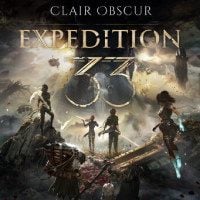
April 24, 2025
RPG, Fantasy, jRPG, Singleplayer, TPP, Turn-based, Xbox Game Pass Ultimate, PC Game Pass.
A third-person jRPG featuring a fantasy world inspired by the French belle epoque period. Clair Obscur: Expedition 33 allows us to lead a team of diverse characters tasked with defeating a hostile deity called the Paintress. We engage in turn-based battles with action elements (parries, dodges, QTE's). The game runs on Unreal Engine 5.
Gamepressure
OpenCritic
Steam
Users

September 14, 2017
RPG, Crowdfunding, Fantasy, Indie Games, Internet, Classic RPG, Co-op, LAN, Multiplayer, For 2 Players, Splitscreen, Romances, Singleplayer, Turn-based, Isometric View.
A direct sequel to Divinity: Original Sin and another installment in the popular RPG series launched in 2002 by the Belgian developer, Larian Studios. The story takes place once more in the fantasy land of Rivellon and presents events that occur between the first and second game in the franchise. This time around, we assume the role of a sorcerer, who uses the forbidden powers of the Source and is constantly pursued by the Order. We can determine the race and origin of our character, both of which influence the attitude of the encountered NPCs towards him or her to a large extent. The gameplay mechanics do not deviate significantly from the previous game in the series, although the developers did introduce a few novelties, such as a modified combat system, new element combinations as well as Source Powers. Contrary to its predecessor and other titles of the franchise, the production has a clearly darker atmosphere.
OpenCritic
Steam
Users

February 17, 2022
Strategy, Fantasy, Internet, LAN, Multiplayer, RTS, Singleplayer, War Strategy, Turn-based, Warhammer.
The third and final part of the Total War series sub-cycle based on the Warhammer license. Total War: Warhammer III introduces, among others, the Kislev and Cathay factions, which take part in even greater battles than before.
Gamepressure
OpenCritic
Steam
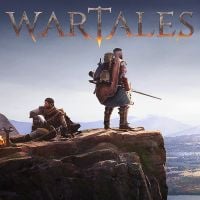
April 12, 2023
RPG, Fantasy, Indie Games, Internet, Co-op, Multiplayer, Sandbox, Singleplayer, Tactics, Turn-based, Isometric View, Xbox Game Pass Ultimate, Xbox Play Anywhere, Xbox Game Pass Premium.
A combination of an RPG and a strategy game, set in a grim medieval-like world. In Wartales we lead a squad of mercenaries, traversing the world, fighting enemies and taking on odd jobs.
Steam
Users

March 31, 2020
RPG, jRPG, Remaster/remake, Romances, Singleplayer, TPP, Turn-based, Urban Fantasy.
A new version of the extremely popular jRPG game, which debuted in the West in 2017 on PlayStation 4 and PlayStation 3. The title was officially announced in March 2019.
OpenCritic
Steam
Users
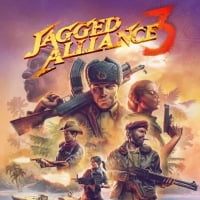
July 14, 2023
Strategy, RPG Elements, Internet, Co-op, Multiplayer, Singleplayer, Tactics, Turn-based.
The third main installment in an iconic series of turn-based strategy games. Jagged Alliance 3 is set in a fictional nation of Grand Chien, where a squad of mercenaries must find the missing president and restore order.
Gamepressure
Steam
Users
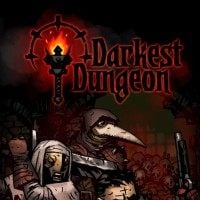
January 19, 2016
RPG, 2D, Dungeon Crawler, Fantasy, Horror, Indie Games, Classic RPG, Roguelike, Singleplayer, Turn-based.
A dark fantasy cRPG developed by debuting studio Red Hook. The story is set in a dark, medieval-like universe. While exploring ruins of an old castle and its dungeons, you face off against forces of darkness that overwhelmed the land because of the reckless actions of its previous sovereign. As you delve into the depths, you discover the dark history of a family who brought the evil upon the world. The gameplay focuses on dungeon crawling - dungeons filled with traps and crawling with monsters that need to be dealt with during turn-based combat sequences. An original idea is the sanity indicator of your heroes. Each team member has different personality and reacts differently to what is happening around him/her. Therefore, while playing you should keep an eye on their well being and fear levels, alleviating their stress by drinking alcohol or brawling, if needed.
Gamepressure
OpenCritic
Steam
Users
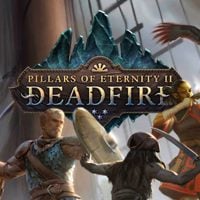
May 8, 2018
RPG, Crowdfunding, Fantasy, Indie Games, Classic RPG, Romances, Singleplayer, Ships, Turn-based, Isometric View, Xbox Game Pass Ultimate, Xbox Game Pass Premium.
A sequel to the successful RPG developed by Obsidian Entertainment. The story told in Pillars of Eternity II: Deadfire follows the threads started in the first installment of the series. Eothas, the god of renewal and light, comes back to life and takes the form of a statue buried under the protagonist’s keep. Although the stronghold gets destroyed, the main hero survives. From now on, he or she has to pursue a new goal, which is to hunt down Eothas as well as find answers to questions that can bring chaos to the world of gods and mortals. Pillars of Eternity II: Deadfire takes the player to the eponymous Deadfire archipelago in the far east. In this new region you can travel not only on foot, but also by ship. While controlling your party of characters, in the classic isometric view, you get to explore different locations, complete missions of varying importance and fight with opponents met on the way. Note that the world of Pillars of Eternity II: Deadfire lives a life of its own, and the choices you made in the first game have consequences here too. Some changes and improvements were made to the User Interface and dialogue system as well as the visuals, which now feature dynamic weather.
OpenCritic
Steam
Users
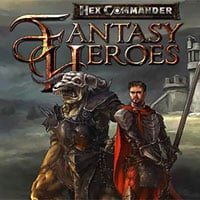
October 15, 2017
Strategy, Fantasy, Indie Games, Internet, Multiplayer, Polish, Singleplayer, Turn-based, Free-to-play.
Hex Commander: Fantasy Heroes is a turn-based strategy game developed by Home net Games. It takes place in a fantasy world inhabited by humans, elves, orcs and other races. The player assumes the role of a general of an army of one of the five races. He or she participates in battles, develops a base and tries to gain advantage over the remaining armies.
Steam
Users

March 4, 2024
RPG, Indie Games, Early 20th Century, Polish, Singleplayer, Turn-based, Urban Fantasy, Isometric View.
A Polish RPG set in the early 20-century Warsaw. The Thaumaturge has us playing as the titular character, able to perceive esoteric creatures known as Salutors and wield their powers.
Gamepressure
OpenCritic
Steam
Users
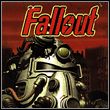
September 30, 1997
RPG, Classic RPG, Post-apocalypse, Science Fiction, Singleplayer, Turn-based, Isometric View, Xbox Game Pass Ultimate, PC Game Pass.
A classic cRPG developed by Black Isle Studios. The action of Fallout is set in a post-apocalyptic world of the future. In 2077, the struggle for oil deposits between the United States and China led to an outbreak of a war, which eventually ended with both sides using their nuclear arsenal. However, before the missiles came down some groups of American citizens had managed to find refuge in commercial shelters, called the Vaults. 84 years later, a malfunction occurs in Vault 13. The player-controlled protagonist is sent to the surface with the mission to find a new water chip, necessary to secure the Vault's water supply. The gameplay mechanics are inspired by the GURPS, with extensive character progression options and tactical turn-based combat. The visual style of Fallout clearly references science fiction culture from the 50s.
Steam
Users

February 2, 2024
RPG, jRPG, Remaster/remake, Romances, Singleplayer, TPP, Turn-based, Urban Fantasy, Xbox Play Anywhere.
A remake of an iconic 2007 jRPG, developed by Atlus and running on the Unreal Engine. Persona 3 Reload has us playing as a Japanese high school student, facing monsters known as Shadows during the night.
Gamepressure
OpenCritic
Steam
Users
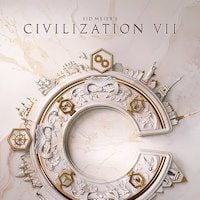
February 11, 2025
Strategy, 4X, Economic, Internet, Multiplayer, Sandbox, Singleplayer, Turn-based.
Sid Meier’s Civilization VII is the seventh installment in the iconic series of 4X turn-based strategies, focused on leading a civilization through years of development. One of the main features in Civ7 is the civilization collapse, forcing us to change to a new one during the campaign.
Gamepressure
OpenCritic
Steam
Users
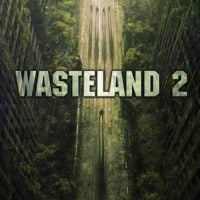
September 19, 2014
RPG, Crowdfunding, Indie Games, Classic RPG, Post-apocalypse, Singleplayer, Turn-based, Isometric View, Xbox Game Pass Premium, Xbox Game Pass Ultimate, PC Game Pass.
A post-apocalyptic cRPG game that serves as a sequel to a hit title from 1988. Wasteland 2 was developed by Brian Fargo’s (the creator of the original Wasteland) inXile Entertainment Studio with financial support from the community via Kickstarter crowdfunding. The story is set 15 years after the events of the first game. You play as a member of the Desert Rangers and traverse the titular Wasteland - what is left of the United States after a nuclear war. Gameplay is based on classic RPG elements, including turn-based combat, free character progression, and player's choices that shape the way the story unfolds. The game is powered by the popular Unity engine, making full use of its ability to generate isometric 3D graphics.
Gamepressure
Steam
Users
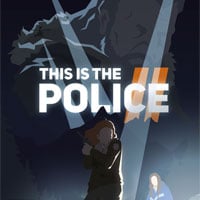
July 31, 2018
Strategy, Adventure Elements, Simulation Elements, Gangster, Indie Games, Police, Singleplayer, Tactics, Turn-based, Isometric View.
A sequel to This is the Police. The game was developed by the creators of the original title, Weappy Studio. Similarly to its predecessor, the game combines traits of adventure games and strategy games. In This is the Police 2 the players assume the role of Lilly Reed – a female sheriff who tries to bring order to the small city of Sharpwood.
OpenCritic
Steam
Users
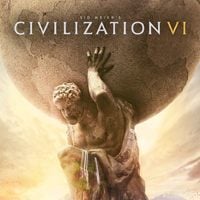
October 21, 2016
Strategy, 4X, Economic, Hotseat, Internet, Multiplayer, Sandbox, Singleplayer, War Strategy, Turn-based, Isometric View.
The sixth installment of the legendary series of turn-based strategy games that allow us to control a selected civilization throughout several thousand years of its history. It was traditionally developed by Firaxis Games led by Sid Meier, the franchise’s creator, himself. Gameplay-wise, Civilization VI combines together the well-proven solutions of its predecessors but also introduces several revolutionary changes. The most important one is the city development. Metropolises can now span across more than one field and consist of four kinds of districts: industrial, scientific, trading, and military. The technology development system was also modified, so that every invention offers an additional mini-quest that provides a useful bonus. Significant changes were also introduced in diplomacy, and the combat mechanics now somewhat mitigate the restrictions introduced by the fifth installment of the series. The game traditionally features an extensive and fully configurable multiplayer mode.
Gamepressure
OpenCritic
Steam
Users

January 25, 2024
RPG, Gangster, Japan, jRPG, Singleplayer, TPP, Turn-based.
The eighth main installment of the Yakuza series and a TPP turn-based jRPG, just like its predecessor. Like a Dragon: Infinite Wealth stars two of the series' protagonists - Ichiban Kasuga and Kazuma Kiryu.
OpenCritic
Steam
Users
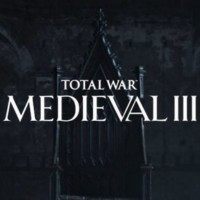
TBA
Strategy, Multiplayer, Singleplayer, The Middle Ages, Turn-based.
The next major installment in Creative Assembly's strategy game series. Total War: Medieval 3 is the third part in the Medieval sub-series and a sequel to Total War: Medieval II from 2006. A new engine named Warcore was used for this game and a Polish developer named Pawel Wojs was appointed project director.
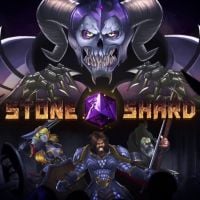
February 6, 2020, Early Access
RPG, 2D, Crowdfunding, Strategic Elements, Fantasy, Indie Games, Roguelike, Singleplayer, Survival, Top-down, Turn-based.
Stoneshard is a turn-based roguelike with a procedurally generated world from the Ink Stains Game. The game takes us to the troubled land of Aldor. We take on the role of a mercenary who one day gets an irresistible offer.
Users
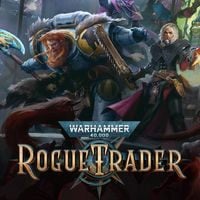
December 7, 2023
RPG, Games Workshop, Internet, Co-op, Multiplayer, PC Game Pass, Science Fiction, Singleplayer, Turn-based, Warhammer 40,000, Isometric View, Xbox Game Pass Premium, Xbox Game Pass Ultimate, Classic RPG.
Warhammer 40,000: Rogue Trader is a cRPG featuring turn-based combat. We play as a space trader and explorer, discovering the far reaches of the galaxy and expanding the borders of the Empire of Man.
Steam
Users
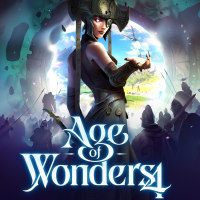
May 2, 2023
Strategy, 4X, Fantasy, Internet, Multiplayer, Singleplayer, Turn-based.
The fourth main installment of the fantasy turn-based strategy series by Triumph Studios, published by Paradox Interactive.
OpenCritic
Steam
Users
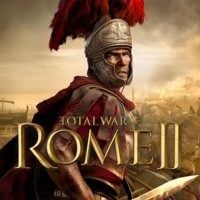
September 3, 2013
Strategy, Internet, Co-op, Multiplayer, RTS, Singleplayer, Ancient History, Ancient Rome, War Strategy, Turn-based.
A grand-scale strategy game developed by British studio Creative Assembly. Total War: Rome II lets players become leaders of the nations of antiquity from the Roman Empire period and struggle for dominance over new territories. Like the past Total War games (e.g. Total War: Shogun 2 and Empire: Total War) gameplay combines turn-based and real-time activities. Your task is to manage you provinces and command armies. The game’s highlight are the spectacular battles of armies fielding thousands of units. The developers of Total War: Rome II carefully kept to historical truth when it comes to battle formations, weaponry, and tactics. High-quality graphics was achieved thanks to a modified version of the Warscape Engine.
Steam
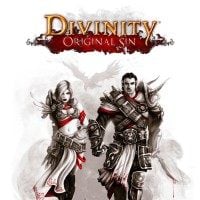
June 30, 2014
RPG, Crowdfunding, Fantasy, Internet, Classic RPG, Co-op, LAN, Multiplayer, For 2 Players, Singleplayer, Turn-based, Isometric View.
Divinity: Original Sin is a sequel to the cRPG series developed by Larian Studios. The game is set before the events presented in Divine Divinity (2002). The story focuses on the adventures of young Source Hunters, who have to delve into the arcanes of forbidden magic and prevent its effects. Gameplay is based on classic RPG mechanics. You lead a team of up to four heroes and together you complete quests, explore locations, and fight enemies. As they gain experience, the characters' stats will increase and they can master new skills. Apart from single player mode, Divinity: Original Sin offers a co-op mode with a second player via LAN or Internet.
OpenCritic
Steam
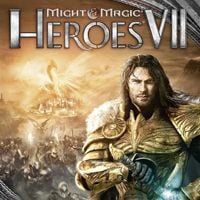
September 29, 2015
Strategy, Fantasy, Hotseat, Internet, LAN, Might & Magic, Multiplayer, For 2 Players, Singleplayer, Turn-based.
The seventh installment of one of the most popular turn-based fantasy strategy series dating back to 1995. It was created by the German studio Limbic Entertainment, whose portfolio includes the previous installment in the Heroes of Might & Magic series and Might & Magic X: Legacy. The story takes us to an empire torn by a civil war, in which young Prince Ivan created the Shadow Council composed of representatives from six different factions. The mechanics of the game are reminiscent of the earliest installments of the series and use a variety of solutions which were not implemented in the sixth part. The previously simplified economic model was improved, and the town screen was restored, together with all the characteristic features of individual factions. The maps are much larger and put greater emphasis on exploration; furthermore, the typical turn-based combat system has been slightly modified. During the battle we can use numerous machines and support units, including catapults, ballistas, and medical tents, and the battle arenas are filled with a larger number of various objects and obstacles.
OpenCritic
Steam
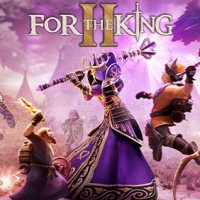
November 2, 2023
RPG, Strategic Elements, Fantasy, Indie Games, Internet, Co-op, Multiplayer, Roguelike, Singleplayer, Turn-based, Isometric View, Xbox Game Pass Premium, Xbox Game Pass Ultimate, PC Game Pass.
The second installment in a series of roguelikes with turn-based strategy and jRPG elements. For the King II is, once again, set in the land of Fahrul, where a group of heroes tries to overthrow the tyrannical queen.
OpenCritic
Users

August 13, 2020
Strategy, Internet, Co-op, Greek Mythology, Multiplayer, RTS, Singleplayer, Ancient Greece, Ancient History, Turn-based.
The second spin-off of the Total War strategy cycle in which players can take part in a conflict known as the Trojan War. In Total War Saga: Troy we can lead the army of the title city or the Greek army attacking it. The game created by Creative Assembly studio features eight famous heroes, headed by Achilles and Ulysses.
OpenCritic
Steam
Users

February 5, 2016
Strategy, Dystopia, Internet, LAN, Multiplayer, PS Plus Extra, PS Plus Premium, Science Fiction, Singleplayer, Tactics, Turn-based, Isometric View.
A turn-based tactical strategy game set in a futuristic, science fiction universe and a sequel to XCOM: Enemy Unknown (2012). Both games were produced by the experienced developer, studio Firaxis Games, founded by Sid Meier, a legend of the video game industry. The story is set 20 years after the events of the last game. Despite their heroic efforts, human forces proved themselves helpless against the alien invaders, and the Blue Planet fell into their hands. However, the remnants of the XCOM organization are still active in the underground, and pick up guerilla tactics against the enemy in order to reclaim the planet. Gameplay mechanics reprises the solutions known from the previous game, featuring both the strategic layer – where you manage your mobile base and develop new technologies – and tactical, turn-based combat. The game features randomly generated maps, as well as improved combat and command system.
Gamepressure
Steam
Users
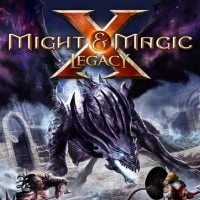
January 23, 2014
RPG, Dungeon Crawler, Fantasy, FPP, Classic RPG, Singleplayer, Turn-based.
Might & Magic X: Legacy is the tenth installment in the legendary cRPG series, and the first one created by Limbic Entertainment. The game is set in the fantasy world of Ashan, after the events of Might & Magic: Heroes VI. The City of Karthal, located on the Agyn Peninsula, is on the brink of seceding from the Holy Empire. Four adventurers, controlled by the player, become involved in a conspiracy, which can affect the fate of the whole kingdom. Mechanics-wise, Might & Magic X: Legacy is based on the earliest installments of the series and features e.g. turn-based combat, a wide range of weapons and equipment, and expansive skill developing options.
OpenCritic
Steam

February 17, 2015
Strategy, Historical, Internet, Multiplayer, RTS, Singleplayer, Ancient History, Turn-based.
Another chapter in the Total War large-scale strategy game series, created and developed by the Creative Assembly studio. After a couple of sequels to the earlier installments in the series (e.g. Medieval, Shogun, and Rome), the developers took on a new great historical figure. The game is set in the late 4th and the early 5th century CE. The Roman Empire is on the brink of collapse, at war with numerous barbaric tribes of the Huns and the Visigoths. Playing as Rome, you lead an army weakened by continuous skirmishes. This makes gameplay much more demanding, challenging even for the veterans of the series. The game realistically presents various military, social, and religious tendencies of the period, e.g. you have to counteract diseases and epidemics and deal with climate changes that affect farming and economy. Additionally, both the UI and the game engine were improved, resulting in better visual quality.
OpenCritic
Steam
Users
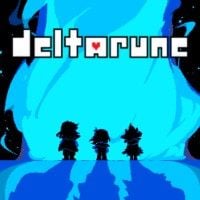
June 4, 2025
RPG, 2D, Experimental/artistic, Episodic, Fantasy, Indie Games, Singleplayer, Turn-based.
An unusual two-dimensional RPG by Toby Fox, referring to the iconic Undertale. In Deltarune, we find ourselves in a new but similar world and face the challenges of the Dark Land, fighting in turn-based battles or disarming enemies in unconventional ways.
OpenCritic
Steam
Users

February 23, 2010
Strategy, Napoleonic Era, Internet, LAN, Multiplayer, RTS, Singleplayer, War Strategy, Turn-based.
Another installment in a renowned series of spectacular strategy games developed by Creative Assembly since 2000. The game focuses on the character of Napoleon Bonaparte and his military conquests at the turn of the 19th century. The player observes his ups and downs during the Italian, the Egyptian, and the European story campaigns. Completing them allows the player to witness both the rise and the fall of his empire. When it comes to the gameplay mechanics, the game introduces only slight modifications. The game combines all the successful mechanics employed in Empire: Total War with a set of new features, such as the system of army provisions, ship repairs, further extension of diplomacy and the increased role of spies. During the battles, the generals (including Bonaparte himself) are of high relevance, as they are capable of punishing the soldiers and bolstering their spirit. Both the visuals and AI of the units were improved.
Steam
Users

May 16, 2006
Strategy, RPG Elements, Fantasy, Hotseat, Internet, LAN, Might & Magic, Multiplayer, Singleplayer, Turn-based.
The fifth installment of the popular fantasy turn-based strategy game series. To freshen up the franchise, the production of the game was entrusted to Nival Interactive, an experienced Russian developer, whose portfolio includes such games as Rages of Mages, Etherlords, Silent Storm, and Blitzkrieg. The game takes place in the land of Ashan and focuses on the war with hosts of demons, who, having killed the king, are ravaging the country. The fate of Ashan lies in the hands of heroes, who confront the forces of evil in order to defend their home factions. The new developer decided not to revolutionize the gameplay and instead focused on the strategic aspects and minor modifications of the game's mechanics; for example, the heroes no longer participate in battles, there are no separate town screens, time limits during combat have been added, and new diplomacy options are available. It is the first game in the series to feature a fully 3D environment.
Steam
Users
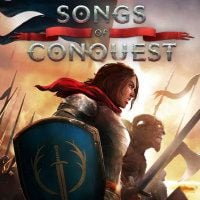
May 20, 2024
Strategy, RPG Elements, Fantasy, Hotseat, Indie Games, Internet, Multiplayer, For 2 Players, Singleplayer, Turn-based.
Songs of Conquest is a fantasy strategy enriched with RPG elements. The player must both manage the kingdom and lead the team as they explore the game world and perform their tasks. In addition, there are tactical battles and the whole game takes place in the turn-based system.
OpenCritic
Steam
Users
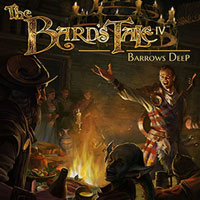
September 18, 2018
RPG, Crowdfunding, Dungeon Crawler, Fantasy, FPP, Classic RPG, Singleplayer, Turn-based, Xbox Game Pass Premium, Xbox Game Pass Ultimate, PC Game Pass.
The fourth installment in the legendary RPG series launched back in the mid-80s. The title was developed by inXile entertainment thanks to the funds raised at Kickstarter, and its production was overseen by Brian Fargo, the creator of the initial entry of the franchise. The action takes place in the fantasy world known from previous installments of the series. The city of Skara Brae is its center. From there, the players set out to conquer numerous ruins and dungeons leading a party consisting of various races and classes, which influences the course of the plot as well as the attitude of the encountered NPCs. The available locations are grid-based in design, while combat takes place in an unusual, phase turn-based system that allows our party members to perform two actions simultaneously and thus achieve a synergy effect of various skill combinations. Bardic music also plays an important role during the fights. The ballads were recorded in Gaelic language.
OpenCritic
Steam
Users
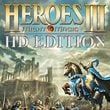
January 29, 2015
Strategy, 2D, RPG Elements, Fantasy, Hotseat, Internet, Might & Magic, Multiplayer, Remaster/remake, Singleplayer, Turn-based.
A remastered edition of one of the most well-received installments of the legendary Heroes of Might & Magic series, created for the 15th anniversary of the game's original release and the 20th anniversary of the franchise. It was commissioned by Ubisoft and developed by DotEmu, known e.g. from the remake of the cult platform game Another World. The contents of the HD edition are the same as the base game (no expansions included) and consist of 7 story campaigns (about 50 maps in total), a skirmish mode and a functional editor. Compared to the original, the key changes are the upgraded wide-screen-compatible HD visuals. The graphics are now sharper and more clear-cut, which is the result of reprogramming over 25,000 elements and models. The multiplayer mode has also been upgraded, both in the local “hotseat” mode and the online one. Also, for the first time ever, a version for mobile devices was created.
OpenCritic
Steam
Users
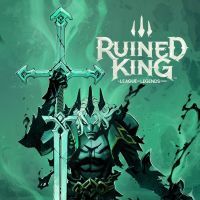
November 16, 2021
RPG, Fantasy, Singleplayer, Turn-based, Isometric View.
Ruined King: A League of Legends Story is an RPG set in a fantasy universe known from the most popular MOBA game. The production offers a single player mode only, and the gameplay focuses on turn-based combat.
Steam
Users
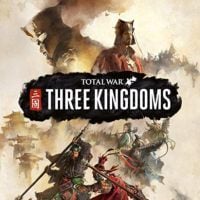
May 23, 2019
Strategy, China, Economic, Internet, Multiplayer, Romance of The Three Kingdoms, RTS, Singleplayer, Ancient History, War Strategy, Turn-based.
The twelfth main entry in the Total War series of strategy games. For the first time in history, it takes the players to the ancient China, to the times when the country was split into three rival kingdoms. The title combines traits of classic RTS and turn-based strategy game.
OpenCritic
Steam
Users
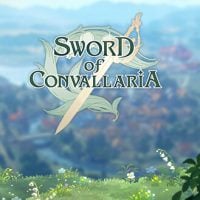
August 1, 2024
RPG, 2D, Fantasy, jRPG, Singleplayer, Tactics, Turn-based, Isometric View, Free-to-play.
A free-to-play isometric jRPG from the authors of Torchlight Infinite. Sword of Convallaria has us commanding a group of mercenaries trying to bring peace to the fantasy land. We develop and modify our team, expand our city and engage in battles.

June 26, 2025
RPG, jRPG, Singleplayer, TPP, Turn-based, Urban Fantasy, Free-to-play.
A free-to-play jRPG with gacha mechanics, serving as a spin-off of the best-selling Persona 5. In Persona 5: The Phantom X we play as a high school student. He leads a normal life during the day, but travels to Metaverse at night. This is where we must face various dangers.
OpenCritic
Steam
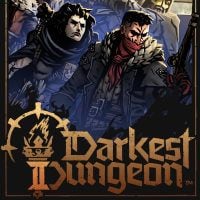
May 8, 2023
RPG, Fantasy, Horror, Indie Games, Roguelike, Singleplayer, Turn-based.
The second installment of the cycle of grim RPGs, which was launched in 2016. The story told in Darkest Dungeon II focuses on the apocalypse and the hardships of a long, exhausting journey, while the gameplay is based on the mechanics known from the original. Players must, therefore, travel through gloomy locations, facing the dangers lurking there and taking care of the emotional state of the characters.
Gamepressure
OpenCritic
Steam
Users
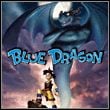
August 24, 2007
RPG, Fantasy, jRPG, Singleplayer, TPP, Turn-based, Xbox Exclusive.
Blue Dragon is one of two epic RPG positions prepared by Japanese Mistwalkeri studio. The project, supported by the creator of manga and anime, Akira Toriyama, was released by Microsoft.
Users

March 3, 2009
Strategy, Napoleonic Era, Internet, LAN, Multiplayer, RTS, Singleplayer, War Strategy, Turn-based, 18th Century.
The fifth installment in the popular strategy game series created by Creative Assembly in 2000. This new game is set in the 18th century, focusing on key events of the period, such as the American Civil War, the Industrial Revolution, and the rivalry over the Eastern trade routes. Although the core concept of the gameplay remains the same, the mechanics went through some major alterations, mainly due to the introduction of sea warfare. The game lets you command entire fleets as well as individual ships. Moreover, external factors, e.g. weather conditions, can affect sea battles. Additionally, the game offers improved advisers, as well as new options of trade, diplomacy, and espionage. Due to the widespread use of firearms in the period, new combat tactics have to be used. However, the key elements of the series, the turn-based strategic layer and large-scale battles, remained unchanged.
Steam
Users
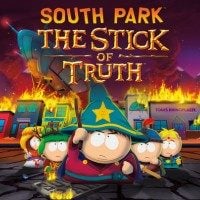
March 4, 2014
RPG, 2D, Humorous, Classic RPG, PS Plus Extra, PS Plus Premium, Animated TV Series, Singleplayer, Turn-based, Xbox Game Pass Ultimate.
A cRPG game based on the popular adult animated TV series South Park. South Park: The Stick of Truth was co-developed by Obsidian Entertainment and the creators of the original animated series – Matt Stone and Trey Parker. The player assumes the role of a kid who, together with his parents, just moved in to the titular town and tries to win his peers’ sympathy. Shared LARP (Live Action Role Playing), in which Cartman and his friends take part, gives the hero a chance to prove himself. The plot of South Park: The Stick of Truth is filled to capacity with absurd humor and references to popular culture. The creators applied elements of classic cRPG mechanics, like character classes, turn-based combat, gaining experience, and reaching higher levels. The production features cartoon-like graphics.
OpenCritic
Steam
Users
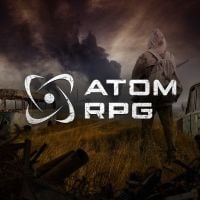
December 19, 2018
RPG, Alternative History, Indie Games, Classic RPG, Post-apocalypse, Singleplayer, Turn-based, Isometric View.
ATOM RPG is a classic feature game produced by Atom Team studio. The player takes on the role of a resident of the postnuklean Soviet Union.
Steam
Users
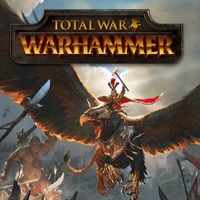
May 24, 2016
Strategy, Fantasy, Internet, Multiplayer, RTS, Singleplayer, War Strategy, Turn-based, Warhammer.
Next installment in the epic strategy game series, introduced by Creative Assembly in 2000. After a series of titles set in different historical periods, the developers decided to take players into one of the most famous fantasy universes, created by the Games Workshop company. In the dark universe of Warhammer, different races constantly fight for power and world domination, unaware of the fact that the real threat comes from a mighty force from the north. The game lets become the leader of one of several races, including humans, orcs, goblins, dwarves, vampires, and others. Disregarding the fantasy elements, the gameplay does not differ significantly from the previous games in the series, with epic real-time battles lying at its core. Between the battles the gameplay switches to a turn-based mode, where on a world map you develop your country, its economy, and establish diplomatic relations with other nations.
Gamepressure
OpenCritic
Steam
Users
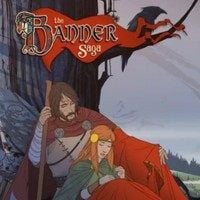
January 14, 2014
RPG, 2D, Crowdfunding, Fantasy, Indie Games, Classic RPG, Singleplayer, Turn-based, The Vikings.
Inspired by the Nordic mythology, a cRPG developed by the independent studio Stoic, whose members worked on, for example, Star Wars: The Old Republic. The action takes us to a world where fratricidal bloodshed between the gods led to chaos and wars. This is an "on the road" type of story, divided into two main plot branches, telling the stories of two Viking parties trying to escape from the threat posed by a mysterious, stone-like race called the Dredge, born as the result of gods’ experiments. Set in fantasy realities, the gameplay combines adventure and RPG elements with a turn-based combat system. With game's progress, your party gains experience and becomes more and more powerful. Also, the decisions you make will exert heavy influence on the plot. The game features amazing 2D graphics, employing art style similar to that of Walt Disney productions.
OpenCritic
Steam
Users
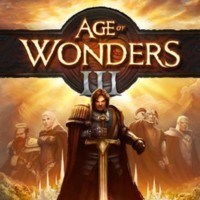
March 31, 2014
Strategy, Fantasy, Internet, Multiplayer, Singleplayer, Turn-based.
The fourth installment of the fantasy strategy game series created and expanded by Dutch studio Triumph Software. Age of Wonders III takes place in a fantasy world in which various races and factions are fighting for power. The story campaign of the game focuses on rivalry between two of the factions – the Commonwealth Empire and the Elven Court. Gameplay of Age of Wonders III mixes strategy and cRPG features. Players are managing their kingdom, exploring the map, discovering new locations, encountering NPCs and participating in battles. The game offers a few single- and multiplayer modes. In contrast to the previous installments of the series, Age of Wonders III features three-dimensional graphics.
Steam
Users

December 4, 2025
RPG, 2.5D, Fantasy, jRPG, Singleplayer, Turn-based, Xbox Play Anywhere.
The third installment of the jRPG series from Square Enix, started in 2018. Octopath Traveler 0 offers a unique Path Actions system and features "HD-2D" graphics style. This time we can create our own character and there's also a new mechanic which involves rebuilding a destroyed city.
OpenCritic
Steam
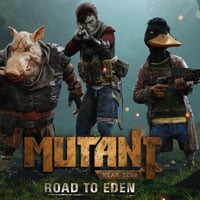
December 4, 2018
Strategy, Adventure Elements, RPG Elements, Post-apocalypse, Science Fiction, Singleplayer, Stealth, Turn-based.
A 3D tactical adventure game with stealth elements and turn-based combat. During the game, we control a group of mutants searching for the mythical Eden in a post-apocalyptic world.
Steam
Users